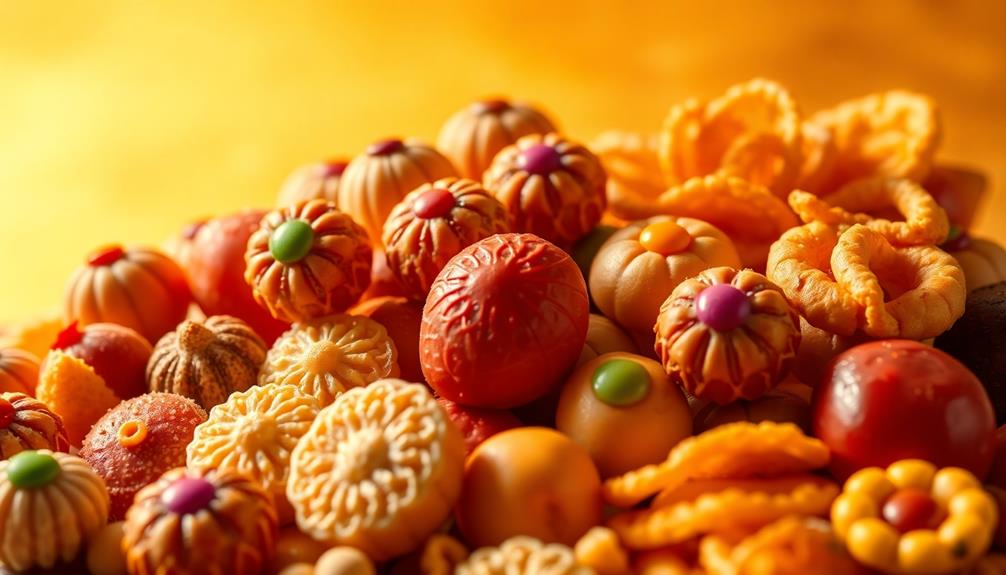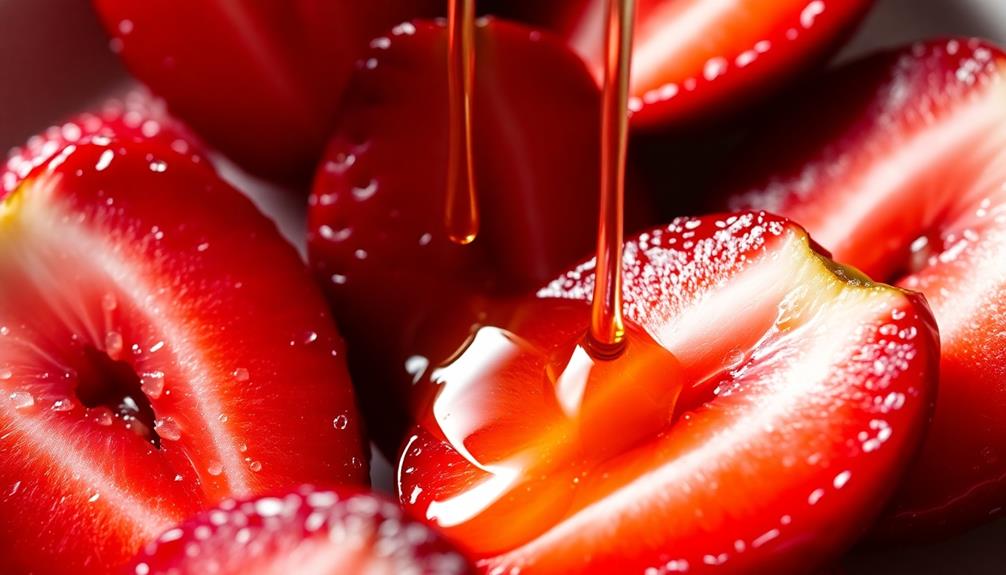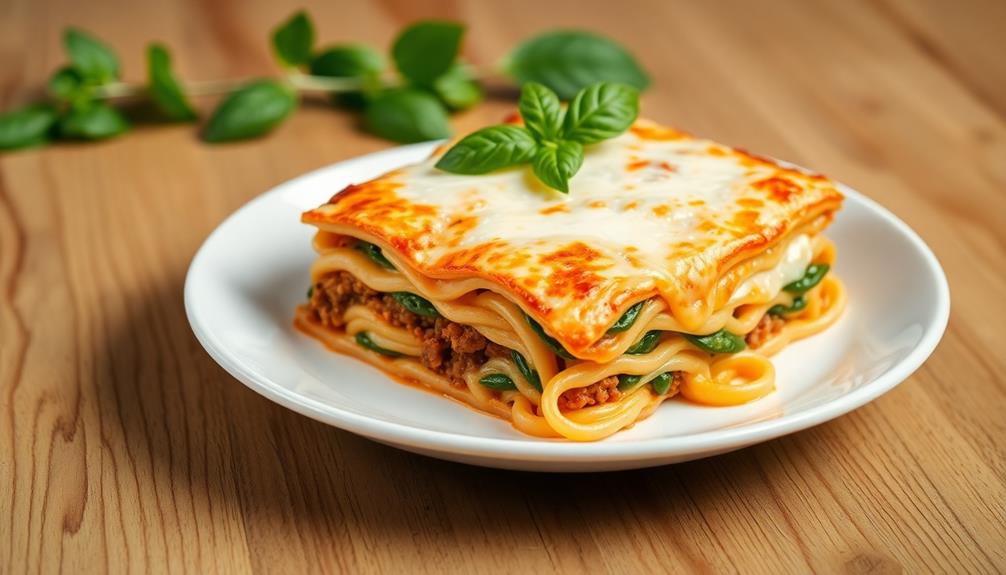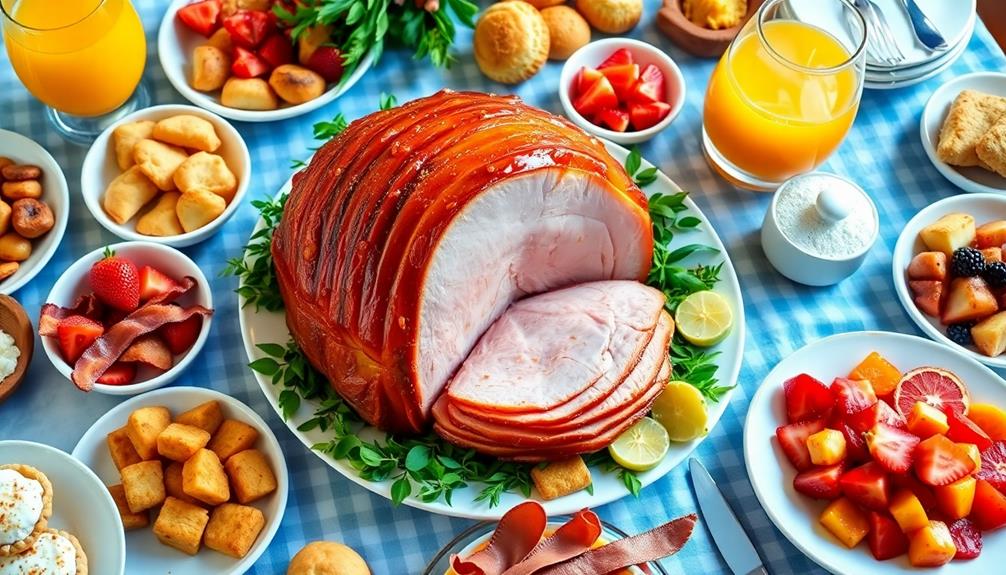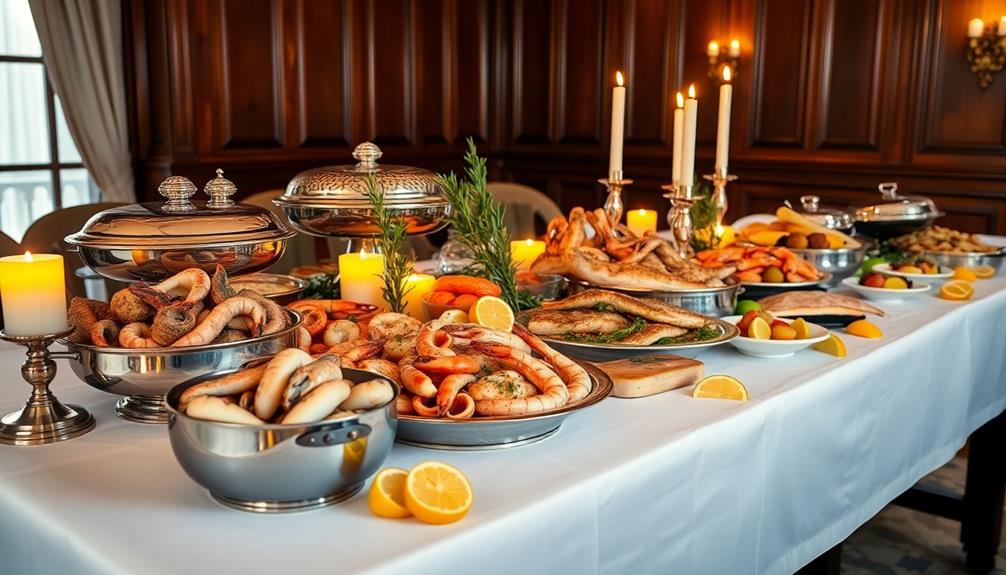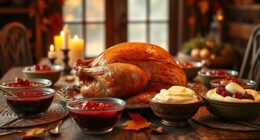Diwali, the Festival of Lights, wouldn't be complete without an array of mouthwatering sweets and savory snacks! Each region in India offers unique specialties, reflecting the country's diverse culinary heritage. Iconic treats like besan ladoo, barfi, and gulab jamun symbolize joy, prosperity, and togetherness. These delicacies are meticulously crafted using traditional techniques and spices, fostering a spirit of community during the festivities. The act of sharing these flavorful bites enhances the celebratory atmosphere, creating lasting memories. Ready to learn more about the significance and preparation of these Diwali delights?
Key Takeaways
- Diwali sweets and snacks are integral to the festival, representing the diversity of Indian culinary traditions and the triumph of light over darkness.
- Traditional Diwali delicacies, such as Besan Ladoo, Barfi, and Gulab Jamun, are beloved worldwide for their rich flavors and vibrant colors.
- Sweets symbolize joy, prosperity, and community during Diwali, fostering a sense of togetherness through the act of sharing.
- Key cooking techniques for Diwali treats involve careful toasting, sweetness adjustment, and monitoring the baking process to achieve the perfect texture and appearance.
- The enjoyment of Diwali sweets is a cherished tradition that enhances the festive atmosphere, creating lasting memories and reinforcing the bonds of community.
History
The origins of traditional Diwali sweets and snacks can be traced back to ancient Indian culinary traditions. For centuries, these delectable treats have been an integral part of the vibrant Diwali celebrations, which commemorates the triumph of light over darkness, knowledge over ignorance, and good over evil.
Over time, each region of India has developed its own unique Diwali specialties, reflecting the diverse cultural and culinary influences across the subcontinent. From the iconic barfi, a fudge-like sweet, to the crunchy chakli and the fragrant gulab jamun, these treats are now beloved worldwide.
Their preparation often involves intricate techniques and the use of traditional spices, nuts, and dairy products, creating a rich and complex flavor profile.
The act of sharing these sweets and snacks with family, friends, and neighbors is a cherished tradition, symbolizing the spirit of togetherness and celebration that defines the Diwali festivities.
As you indulge in these delightful delicacies, you'll not only savor their taste but also connect with the rich cultural heritage that they represent.
Recipe
Diwali, the festival of lights, is a time-honored celebration in India, marked by the sharing of delectable sweets and savory snacks. Among the most beloved Diwali delicacies are the traditional Indian desserts, which often showcase the vibrant colors and rich flavors that are synonymous with this joyous occasion.
One such delectable treat is the Besan Ladoo, a delightful confection made with gram flour, sugar, and a blend of aromatic spices. This classic sweet is a staple in many Indian households during the Diwali festivities, offering a perfect balance of crumbly texture and indulgent sweetness. Another popular Indian sweet enjoyed during Diwali is the Sesame Balls recipe, known as Til Ladoo in Hindi. This traditional treat is made from roasted sesame seeds, jaggery, and a touch of cardamom for an irresistible flavor. Both the Besan Ladoo and Sesame Balls are not only delicious but also hold cultural significance as they are often shared with friends and family during the festival of lights.
Ingredients:
- 2 cups gram flour (besan)
- 1 cup sugar
- 1/2 cup ghee (clarified butter)
- 1 teaspoon cardamom powder
- 1/2 teaspoon nutmeg powder
- 1/4 teaspoon saffron threads (optional)
- 2 tablespoons chopped cashews (optional)
Cooking Instructions:
In a large skillet, heat the ghee over medium heat. Add the gram flour and stir continuously for about 10-12 minutes, until the flour turns a light golden brown and emits a nutty aroma.
Remove the skillet from heat and let the flour mixture cool slightly. In a separate bowl, combine the toasted gram flour, sugar, cardamom powder, and nutmeg powder. Mix well until the ingredients are thoroughly incorporated.
Divide the mixture into small lemon-sized balls and gently press a few chopped cashews into the center of each ladoo, if desired. Store the Besan Ladoos in an airtight container and enjoy the delightful flavors of this traditional Diwali sweet.
For best results, be sure to stir the gram flour continuously while toasting to prevent it from burning. Additionally, you can adjust the sweetness to your personal preference by adding or reducing the amount of sugar. The saffron threads can be added for a vibrant visual appeal and a subtle floral note.
Cooking Steps
Gather your spices and tools – you're ready to start cooking!
First, mix the dry ingredients in a bowl until they're well combined.
Then, add the wet ingredients and knead the dough gently until it's smooth and pliable.
Step 1. Gather Ingredients and Equipment
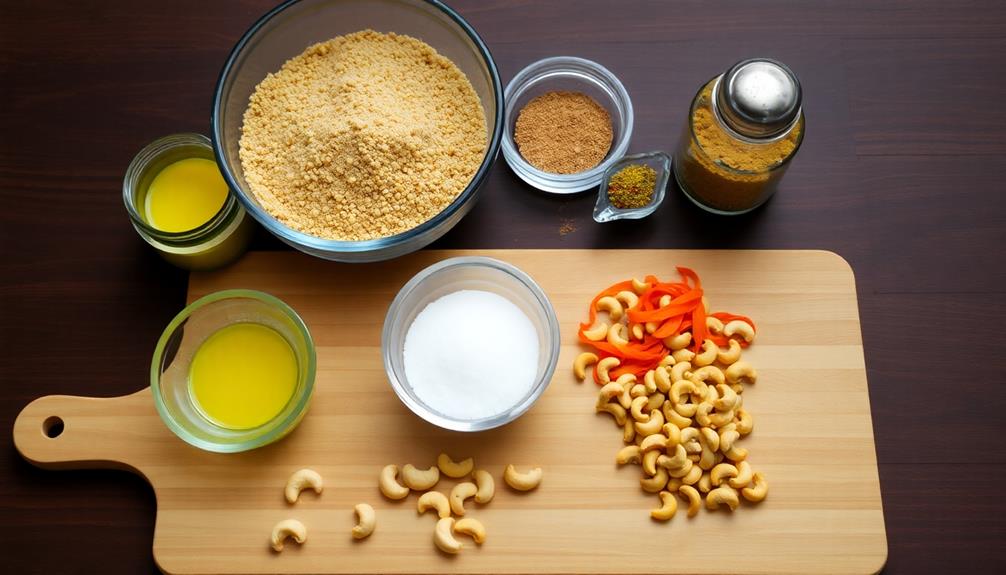
Before beginning the cooking process, ensure you have gathered all the necessary ingredients and equipment. For the Diwali sweets and snacks, you'll need a range of items.
Start by gathering the dry ingredients like flour, sugar, ghee, and spices. Make sure you have measuring cups and spoons to accurately portion out each ingredient.
Next, collect the wet ingredients such as milk, yogurt, and cardamom pods. Don't forget the essential tools like a rolling pin, baking trays, and a mixing bowl.
Now, take a look at your workspace. Clear the countertop and have all the gathered items within easy reach. This will help the cooking flow smoothly.
Remember to wash your hands and have a clean, dry towel nearby. With your ingredients and equipment ready, you can start the delicious process of making Diwali sweets and snacks.
Get excited, as the flavors and aromas are about to fill your kitchen!
Step 2. Mix Dry Ingredients
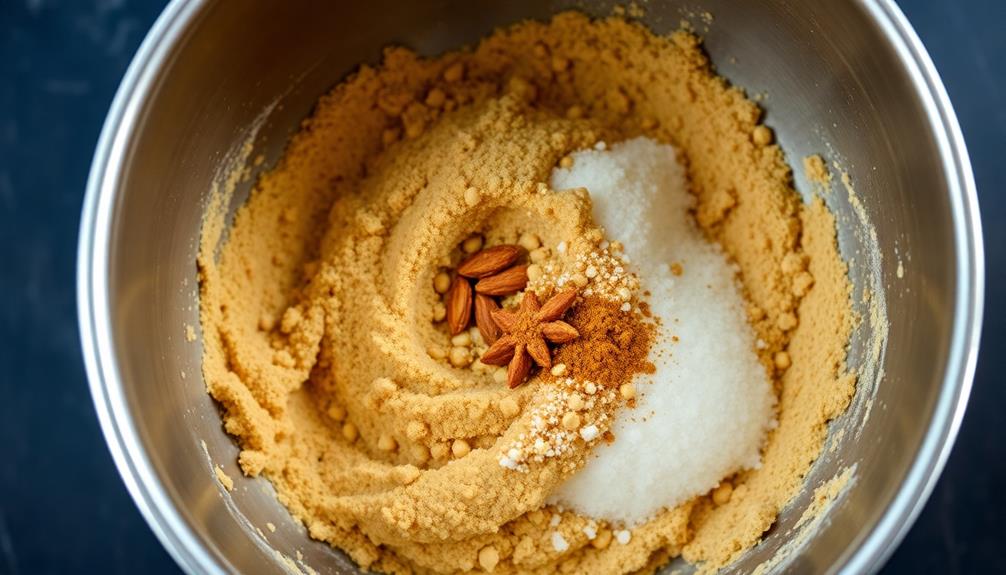
Begin by mixing the dry ingredients in a large bowl.
You'll need to combine 1 cup of all-purpose flour, 1/2 cup of semolina flour, 1/4 cup of ground almonds, 1/4 cup of ground pistachios, and 1/4 cup of ground cashews.
Use a whisk to thoroughly mix these together until they're evenly distributed.
Next, add 1/2 cup of sugar and 1/2 teaspoon of ground cardamom.
Gently stir these in with a wooden spoon. The cardamom will give your sweets a lovely, aromatic flavor.
Be sure to break up any clumps of sugar as you mix.
Step 3. Add Wet Ingredients
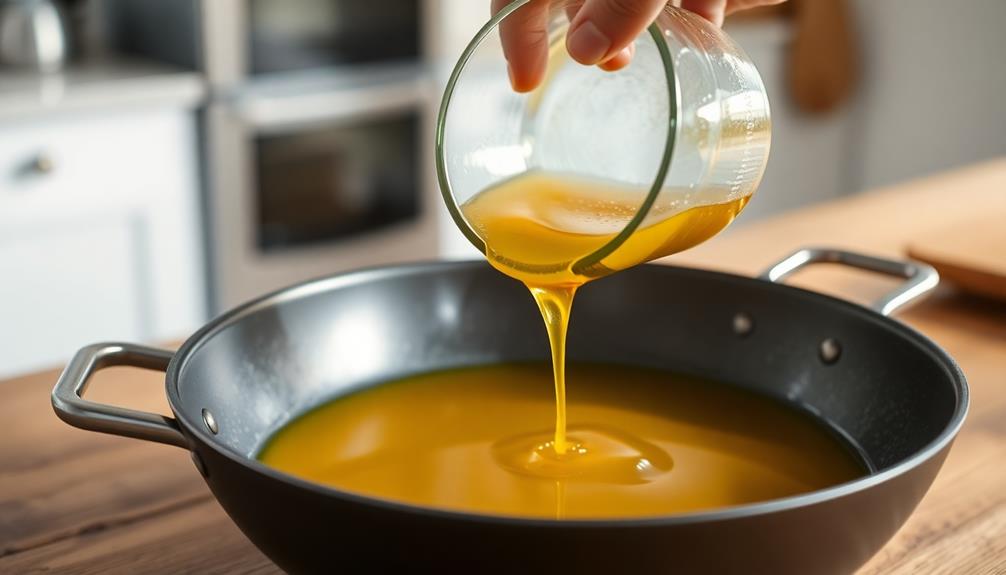
Next, create a well in the center of the dry ingredients and pour in 1/4 cup of melted ghee or clarified butter. Stir the mixture gently until the ghee is evenly distributed and the ingredients start to form a dough-like consistency.
If the dough seems too dry, add a tablespoon of milk at a time, mixing well after each addition, until you achieve the desired texture. It should be soft and pliable, but not sticky. Incorporating nutritious juices, like beet juice, can also be a great addition to your festive treats as they support overall wellness and improve blood flow.
Once the dough is ready, knead it lightly with your hands for a minute or two. This helps to bring the ingredients together and develop the gluten, resulting in a smoother, more cohesive texture.
Be careful not to overwork the dough, as that can make the sweets tough. Divide the dough into equal portions and begin shaping them into your desired Diwali treat forms, such as laddoos, barfi, or kaju katli.
With the wet ingredients incorporated, you're now ready to start the cooking process and bring these festive delights to life.
Step 4. Knead the Dough Gently
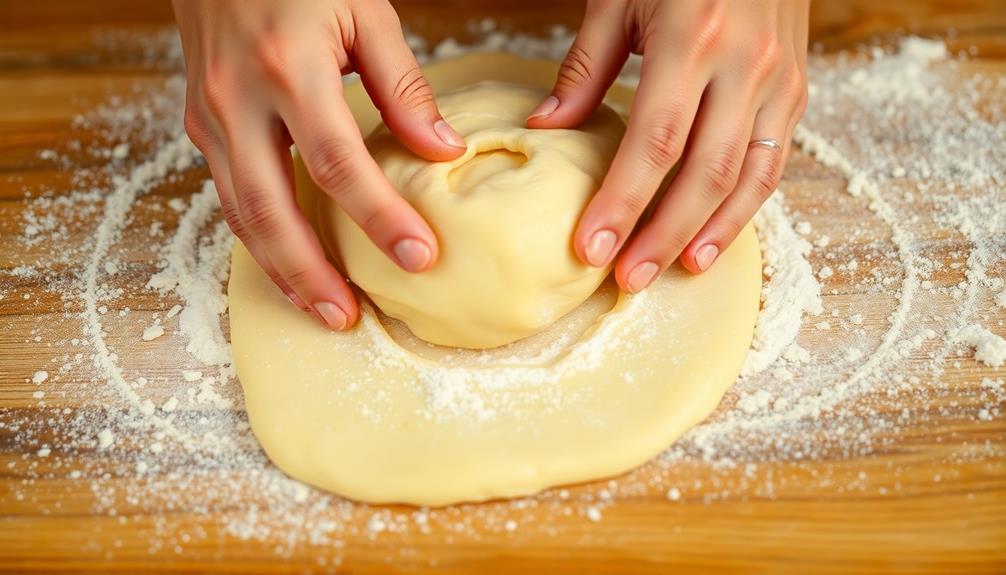
Gently knead the dough with your hands for a minute or two. This step is crucial to achieve the perfect texture for your Diwali sweets. Use the heel of your hand to press and fold the dough, then use your fingertips to gently stretch and shape it.
Keep working the dough until it becomes smooth and elastic. Be careful not to overknead, as that can make the dough tough.
Once the dough is ready, you can start shaping it into your desired forms. Whether you're making traditional Indian mithai or modern fusion sweets, the gentle kneading process will ensure the dough holds its shape and has a delightful melt-in-your-mouth consistency.
As you work, imagine the joy and celebration that will come when your family and friends savor these homemade treats. The love and care you put into kneading the dough will shine through in every bite.
Step 5. Shape and Bake the Dough
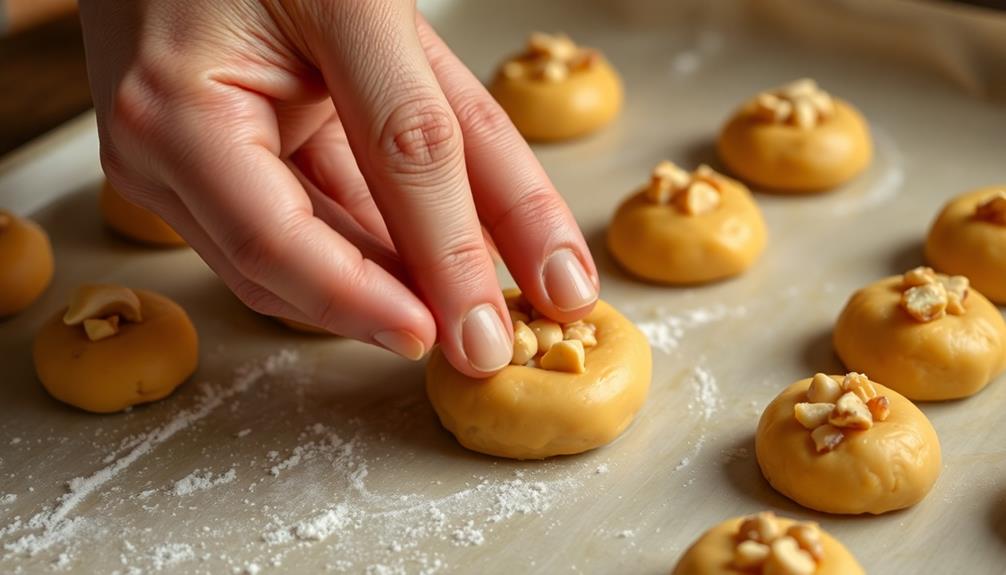
With your dough kneaded to perfection, you can now start shaping it into your desired forms. Divide the dough into smaller portions, each one perfect for creating a unique Diwali treat.
Gently roll and shape the dough, letting your creativity shine. Form delicate laddoos, crisp chaklis, or intricate soan papdi. Carefully place the shaped dough onto lightly greased baking trays, ensuring they've enough space to expand during baking.
Preheat your oven and slide the trays in, filling your kitchen with the tantalizing aroma of baking sweets. Keep a close eye as they slowly turn golden brown, their textures transforming into flaky, crisp perfection.
Rotate the trays occasionally for even baking. Once done, remove the trays and let the treats cool completely before handling them.
With your freshly baked Diwali delights ready, you can now move on to decorating and packaging them, ready to share the joy of the festival with family and friends.
Final Thoughts
As the Diwali festivities wind down, it's time to reflect on the joyous experience of indulging in the myriad of traditional sweets and snacks. The process of carefully shaping the dough, baking it to perfection, and decorating the final treats has been a cherished tradition passed down through generations.
The vibrant colors, mouthwatering aromas, and delightful flavors have truly captured the spirit of this beloved festival.
Whether you've enjoyed the crisp and flaky texture of the kaju katli or the rich and creamy taste of the gulab jamun, these Diwali delicacies have undoubtedly left a lasting impression.
As you savor the last few bites, remember that the true essence of Diwali lies not only in the sweets but also in the sense of community, togetherness, and celebration that they inspire.
As you eagerly await the next Diwali, may the memories of these delectable treats continue to fill your heart with joy and anticipation.
Frequently Asked Questions
How Long Do Diwali Sweets and Snacks Typically Last?
Diwali sweets and snacks typically last around a week or two, depending on how you store them. They'll stay fresh longer if you keep them in an airtight container at room temperature, out of direct sunlight.
What Are Some Tips for Storing Diwali Sweets and Snacks?
To store your Diwali sweets and snacks, keep them in airtight containers at room temperature. Avoid refrigerating them, as this can make them soggy. For longer shelf life, store the items in a cool, dry place.
Can Diwali Sweets and Snacks Be Shipped or Delivered?
Yes, you can ship or deliver Diwali sweets and snacks. Many bakeries and specialty stores offer online ordering and delivery options to make it convenient for customers to enjoy these festive treats, even if they can't be there in person.
What Are the Most Popular Diwali Sweets and Snacks Globally?
The most popular Diwali sweets and snacks globally include laddoos, barfi, soan papdi, and samosas. They're beloved for their rich flavors and ability to bring people together during this joyous celebration.
How Do Diwali Sweets and Snacks Differ Across Regions in India?
Diwali sweets and snacks vary across India's regions. Northern delicacies like barfi and jalebi differ from southern specialties like mysore pak and athirasam. Regional flavors, ingredients, and preparation methods make each area's Diwali treats unique.
